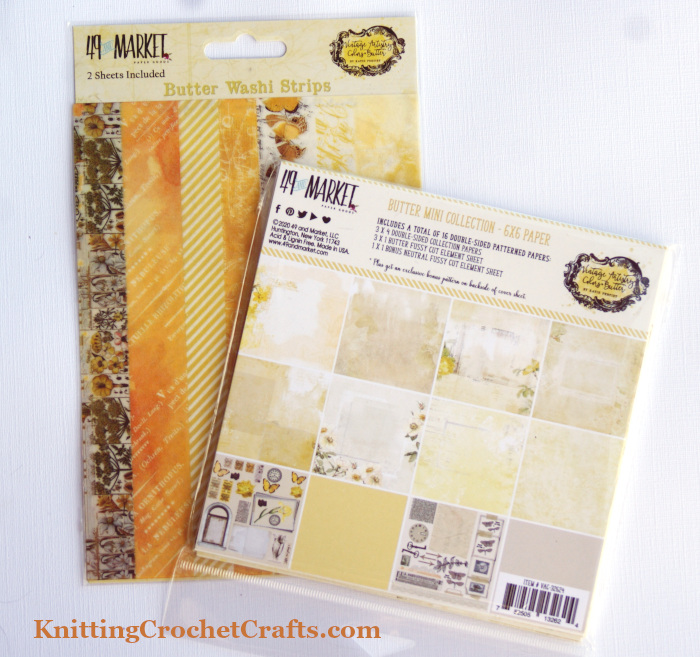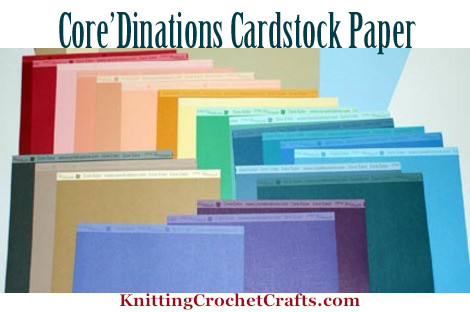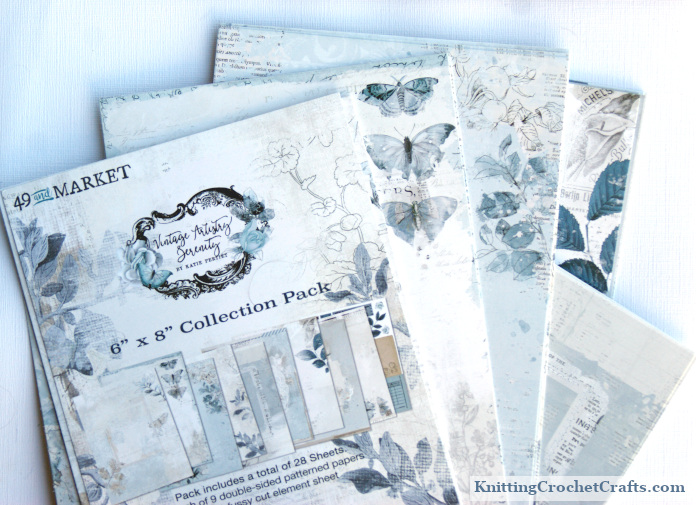An Introduction to Choosing Cardstock and Patterned Paper for Scrapbooking
Do you want to learn how to choose paper for scrapbooking? Maybe you’ve been overwhelmed by all the scrapbooking papers available; there are so many choices that it’s hard to know where to start. This brief guide is intended to help you choose your first scrapbooking paper with confidence.
Choosing Basic Cardstock
For most scrappers, cardstock is a staple. If you’re new to scrapbooking, it makes sense to buy a conservative amount of cardstock in basic colors that you are likely to use. Don’t go overboard with your purchases until you know you’ll enjoy scrapping with colored cardstock; you might find that you’d rather use patterned paper.
Perhaps you don’t yet know what cardstock colors you’d be likely to use. In that case, here are some considerations:
- Which cardstock colors will harmonize best with your photos?
- What colors are part of your everyday landscape?
- Which cardstock colors would harmonize with your furniture, and the paint on your walls?
- Which colors do your loved ones wear most often? Which colors do you wear most often?
For the most part, these are the cardstock colors that you should consider buying; you might also want to experiment with buying cardstock that is several shades lighter or darker than these colors for a bit of contrast.
In the beginning, avoid buying other cardstock colors unless you have a specific use for them in mind.
My own most-used cardstock colors are gray, white, neutrals, blues and greens; I often use black and navy blue cardstock as well. When I first started my scrapbooking journey, my least-used cardstock colors were red, yellow and purple.
More recently, I’ve been using more yellow cardstock and patterned paper because the aspen trees in my neighborhood turn gorgeous shades of yellow in fall. I think the trick is to choose a beige-friendly yellow for the paper and then use brighter pops of yellow in your accompanying embellishments. A good example: The Vintage Artistry Colors: Butter collection designed by Katie Pertiet for 49 and Market:

Patterned Scrapbooking Paper and Washi Tape From the Vintage Artistry Colors: Butter Collection by 49 and Market, Designed by Katie Pertiet
Since I scrap a lot of outdoorsy layouts, I try to keep a fair amount of pine green, sky-blue, and brown cardstock on hand.
If your goal is to scrap photos of a newborn baby, it would make more sense for you to buy baby-friendly colors like pastel pinks, blues, greens and yellows.
Cardstocks come in a variety of different textures; my advice would be to try out a few different textures and brands until you get a feel for which ones you’ll enjoy working with. It doesn’t matter much to me whether I’m working with flat cardstock or textured, but you might develop a preference for one or the other; many scrappers do.
Choosing Scrapbooking Papers for Specific Layouts
I recommend choosing and printing your photos first, and then picking out papers to match the photos. A high percentage of my most successful layouts were created in this way.
Try this method and see if it will work for you, too. This is a fantastic way to make sure that the photos, colors and patterns will harmonize.
Buying Scrapbooking Papers Without Having a Project in Mind
If you buy scrapbooking paper on impulse, there is one major pitfall to be aware of. You’re likely to buy papers just because they are pretty.
Ever found yourself buying a drop-dead-gorgeous party dress, or a fabulous piece of jewelry, and then it never left the closet because you had no place to wear it? The same exact thing can (and will) happen to you with scrapbooking papers if you aren’t careful.
Be especially cautious about buying papers with large, eye-popping, or busy designs. Any pattern that competes with your photos could prove to be a challenge to use, or at least, to use well, in your layouts. Those papers often look so pretty that it’s hard to resist them. If you really want them, grab them with the intention of using them for making cards, gifts, collages, altered art and home decor items — or to use sparingly in your layouts. Otherwise you might end up with a huge stash of unused patterned paper.
If you ever do find yourself with a bunch of “mistake” papers in your stash, try making cards or collages with them. Those gorgeous focal papers work really well for those types of projects.
Choose Scrapbooking Papers by Theme
For me, choosing papers by theme has been hit or miss.
I think it’s much more important to get the paper colors right, and it isn’t always possible to find themed papers in the right color scheme for your photos. If you can find a paper line that is both the right theme and the right colors, then it is well worth buying that paper. If the theme matches your photos but the colors don’t, I’d recommend finding different paper.
Some scrapbookers, when they want to use a paper that clashes with their photos, will print the photo in grayscale. This approach does work, although I am not personally a huge fan of it. I wrote more about these considerations in my article called “Use Black and White Photography for All the Right Reasons.”
Letting Someone Else Choose Your Scrapbooking Papers
If you don’t have a lot of confidence with putting colors, patterns and embellishments together, it can be fun to subscribe to a scrapbooking kit club.
There are pros and cons to scrapbooking kit club subscriptions.
Scrapbooking Kit Club Pros:
- A kit club can save you time, especially if you are indecisive about what scrapbooking papers and embellishments to buy.
- When you purchase from a kit club, the kit club owner is the one who has to track down a zillion different coordinated items and make sure they are all shipped to you together. If you’ve ever ordered online from a scrapbooking store that only had half your order in stock, you’ll probably appreciate that.
- Kit clubs often make a variety of design ideas available to subscribers. Many kit clubs utilize design teams. Design team members create a range of free project ideas that you can use for inspiration when you make your own projects using the kit.
- It’s fun to get mail! When you receive your kit, you can open it up and get right to work as soon as you have a spare minute. That beats wandering the aisles at your local craft store for hours on end, wondering what to buy.
- It’s also fun to be a part of the community of kit club subscribers. When a new kit club drops, there’s usually a huge amount of creative energy circulated and shared amongst subscribers on forums (and these days, on social media).
Scrapbooking Kit Club Cons:
- You run the risk of buying papers that don’t match your taste, your lifestyle, or your photos. To minimize this risk, take a look at the kit club’s past offerings. If you like what you see, this might not be such a huge worry. If past kits have been hit or miss, keep looking until you find a kit club that has a better track record for creating kits you like and would use.
- I recommend researching a kit club thoroughly before subscribing. Do Internet searches for the name of the kit club. See what past subscribers are saying about the club. Most scrapbooking kit clubs are legitimate and trustworthy, but over the years I’ve seen plenty that weren’t. Check the club’s policies carefully before subscribing. Know what exactly you’ll be getting for your money.
- The Cherry Box is a long-running kit club offered by A Cherry on Top Crafts. I’ve never been a subscriber of their kit club, but I’m a longtime, loyal customer and hardcore fan of their online craft store. They are amazing! If you ever have a question or a problem with your order, you can pick up the phone and call a real, live customer service representative who is actually working at their warehouse and knowledgeable about their products and operations — and who will give you an actual, accurate answer to your question(s). Their kits look to me like they are an outstanding value for the money you’d spend on them. If I were a kit-club type of person, theirs is the one I would buy.
- Tonic Studios offers a kit club that looks super interesting, too. You’ll get the best value out of their kit club if you have a full-sized die cutter, and if you like messing around with mixed media products. Their kit clubs usually contain lots of dies, some stamps, some papers and some mixed media products like sprays, Embellishment Mousse, or Glitter Drops. They offer nearly one-stop shopping for paper craft supplies, so you might also get other things like adhesive, ribbons, stencils, pens/ markers or assorted other goodies in your kits. I’ve never subscribed to their kit club because until recently I didn’t have a die cutter at all, and the die cutter I just got is a compact one that won’t fit most of their dies. But I’m a frequent customer at their online store, and I have been pleased with every order I have placed with them. I feel that their products are an outstanding value for the money spent.
- What did I miss?
- What did I get wrong?
- What do you do differently when choosing scrapbooking paper?
Update 10-14-2022: When I originally wrote this article, there were approximately one zillion kit clubs available; it wasn’t at all hard to find a good one. Now it is much harder to find kit clubs that could work for you. But if this approach sounds interesting to you, I have a couple of recommendations you might want to consider:
Discovering Your Paper Preferences:
After you’ve made a few purchases, the next step is to create some layouts using your new scrapbooking papers. This is the most critical step in the process; when you’re finished with this part, you’ll have confirmation about which papers work well for you. If you’ve chosen some duds, you’ll figure it out, and will be able to better avoid those next time around. Your style is likely to evolve as you learn more about scrapbooking, and as you grow creatively. It’s all a part of the process.
Over to You:
So there you have my take on how to choose papers for scrapbooking. You might agree — or you might have a different opinion. Either way, I invite you to post your perspective:
The floor is open for comments, so please share your ideas in the comments section below.
By Amy Solovay
About the Author: Amy Solovay is a content creator and educator who holds a bachelor’s degree with a studio art minor; she has also earned a separate degree in textile design. Amy got her first camera as a teenager, and she has enjoyed making scrapbooks ever since. Beyond that, she enjoys introducing other crafters to the best new craft supplies, and she also loves helping crafters learn new techniques for making the most of the craft supplies they buy.
As an educator, Amy Solovay used to teach in-person college courses in trend forecasting, marketing and surface design at California Design College in Los Angeles.
Nowadays, Amy uses online platforms to teach digital courses to craft pattern designers, content creators and influencers all over the world. If you’re an artist, crafter or DIY enthusiast who is interested in earning income from your creative work, you’re invited to visit Crafterprise.com to learn more about monetizing the arts, craft(s) and / or DIY projects you do.
Thanks for visiting!
This article was originally posted on 5-13-2010 at the Yahoo Contributor Network. Page last updated on 9-9-2024.

